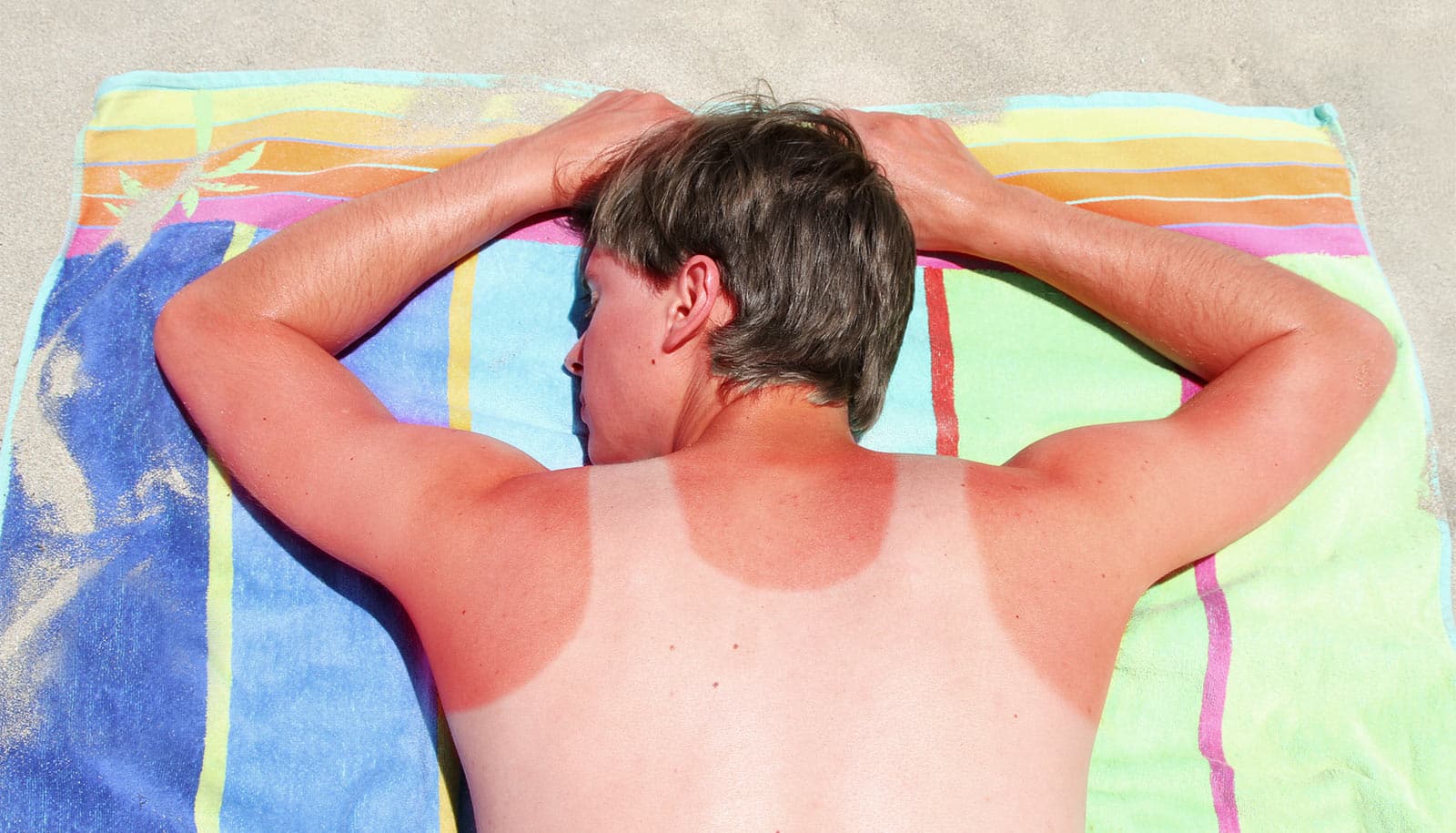An expert has answers for you about the science behind sunburns.
Though the sunburn following a day outside may feel like a punishment, it’s actually the body’s attempt to deal with ultraviolet damage and prevent further harm in the long run—though anyone who’s had to deal with tomato-red skin can confirm that it’s by no means a perfect system.
Jean-Philippe Pellois, associate head of research in the Texas A&M University College of Agriculture and Life Sciences biochemistry and biophysics department, discusses what causes sunburns and why they’re a necessary physiological evil.
What causes sunburns?
Ultraviolet, or UV, light is a high-energy type of light outside the visible spectrum. Pellois says it has so much energy that it can literally break molecules in your skin—most problematically, DNA.
Sometimes a cell can repair the damage, but after a certain amount of exposure to UV, cells initiate apoptosis, or programmed cell death.
“They basically self-destruct because they would otherwise become very unstable and potentially dangerous,” he says.
“A thermal burn from a fire or scalding water on the other hand causes cells to die from the rapid damage, rather than by apoptosis. What you see and experience in the aftermath is similar, but the cells are dying for different reasons and in different ways.”
Once cells begin to die from UV exposure, blood vessels dilate to help immune cells reach the affected areas and digest the cells. An inflammatory cascade begins as well, together causing the redness you associate with the sunburn. Your body then replaces the surface-level skin and pushes the next layer of skin up, leading the layer of dead cells to flake off.
UV sensitivity factors
For cells that get a heavy dose of UV and manage to survive, Pellois says it can cause some crazy things.
“Millions and millions of cells end up with different levels of damage when we get a sunburn,” he says. “If even one cell starts to grow without control, that’s enough to theoretically form a tumor and develop into skin cancer.”
Fortunately, that’s rarely the case following a single sunburn. But the more damage your DNA experiences over time, the more likely mutations are to accumulate and get out of hand, which is why repeated sunburns increase the risk of skin cancer.
The body also has ways of adapting to UV exposure. For instance, Pellois says cells respond to UV by producing more melanin, the pigment involved in tanning and skin color. Melanin can absorb some UV and convert it to a form that won’t cause harm, making people with more melanin more resistant to sun exposure.
Chemical sunscreens work similarly to melanin by changing UV light to a non-harmful form, while mineral sunscreens, like those with zinc oxide or titanium dioxide, work by creating a physical barrier that reflects the light.
Many other factors, even the antioxidant content of foods, can change a person’s sensitivity to UV exposure.
“In the body, everything is connected by biochemistry,” Pellois says. “Our cells are amazing at responding to injury naturally, but you should do whatever you can to keep them from having to do so.”
Source: Ashley Vargo for Texas A&M University













/https://tf-cmsv2-smithsonianmag-media.s3.amazonaws.com/filer_public/d1/82/d18228f6-d319-4525-bb18-78b829f0791f/mammalevolution_web.jpg)






Discussion about this post